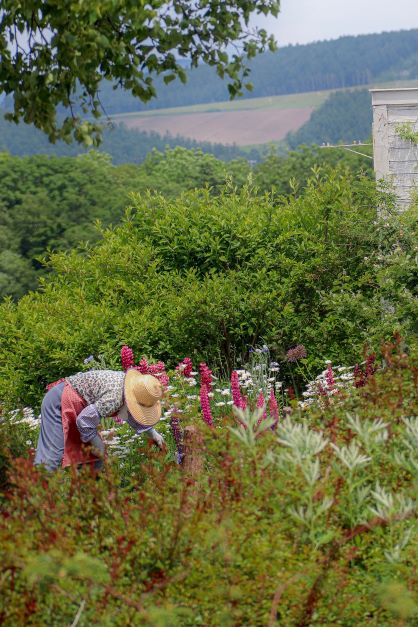No-till agriculture is a type of conservation farming in which farmers don’t till the soil. The goal is to reduce agriculture’s environmental impacts while boosting productivity, efficiency and profit, all while minimizing time and fuel expenses. As Africa adapts to a drier climate, no-till methods are becoming increasingly important. But farmers must use novel techniques to manage weed growth under this system.
What Is No-Till Agriculture?
In traditional farming, tilling disturbs the soil by ripping up root systems. This destruction can lead to erosion as the loose soil no longer has any plants to anchor it in place. With Africa suffering from extreme droughts, erosion can be a severe problem, stripping a field of its nutrient content one layer of soil at a time.
In contrast, no-till systems leave last season’s crops in place when they die. The root systems stay intact and hold down the soil. Minimizing soil disturbance prevents weed seeds in the ground from germinating, decreasing their numbers over time. Additionally, no-till agriculture saves time and money because farmers can plant crops immediately rather than plowing the field first. It also allows invertebrates and microbes to flourish in the soil.
Integrated Weed Management
Weeds compete with crops for sunlight, space and nutrients and can also harbor pests. Integrated weed management (IWM) is essential in a no-till system because farmers usually rely on tilling to destroy emerging weeds. IWM combines multiple weed control tactics for maximum effect. This includes:
1. General Maintenance
Farmers can plant certified weed-free seeds, wash the mud off their tractor wheels before moving to another field and clean their combine harvesters between crops.
2. Preventative Measures
These techniques make it harder for weeds to emerge. Mulch, cover crops and physical barriers, such as tarps, can prevent nuisance plants from establishing.
3. Curative Practices
When weeds are present, farmers may use herbicides, manual removal, mowing or other methods to destroy them. The following techniques allow no-till farms to flourish without unwanted plants taking over.
Crop Rotation
A mainstay of controlling weeds in a no-till agriculture setup, crop rotation is the practice of planting different crops in the same field throughout the year. When farmers harvest one crop, they immediately plant a new one so the pasture never stays fallow. Establishing different plant species creates a constantly changing soil environment, making it harder for weeds to grow.
Cover Crops
Farmers use cover crops to protect the soil and aid moisture retention between cash crop harvests. These plants create a leaf canopy that blocks sunlight from reaching any weeds. Some are also allelopathic, meaning they release toxins that suppress the growth of other nearby plant species. Farmers can let livestock graze on cover crops to maximize efficiency.
Manual Removal
Another method of controlling weeds is to pull them by hand or with a hoe. Although it’s time-consuming, selectively removing weeds can be effective in small areas.
Intercropping
Growing multiple crop species together can shade out weeds or ensure early crop establishment so weeds don’t have a chance to germinate. Farmers can plant species that mutually benefit each other or the soil. Intercropping also saves time and labor while increasing a field’s productivity.
Herbicide Application
Spraying herbicide is a common way to control weeds on a no-till farm. Conservation agriculture emphasizes sound environmental practices but still allows chemical herbicides, especially until weed control establishes.
Farmers use several types of herbicides with different sites of action — the specific spot on the plant that the herbicide targets — to prevent weeds from developing chemical resistance. In one South African experiment, researchers eradicated weeds on no-till farms using a knapsack sprayer to apply herbicide to the weeds without contacting the crops.
Increased Plant Density
Planting densely packed crops in tight rows can choke out weeds. This method helps crops outcompete weeds for sunlight, water and soil as they grow a thick leafy canopy.
Other Methods
Although less commonly used, farmers employ many other IWM strategies on no-till farms. Tarps, weed fabric or plastic ground covers can help prevent weed growth in smaller areas. Farmers can let their animals selectively eat the most palatable weeds in a field and brush weeding uses rotating brushes to pull up weeds.
Mowing a field can temporarily destroy weeds while leaving the ground cover undisturbed. However, this can be a demanding process that requires several applications. Farmers may also plant crops strategically so they don’t emerge during periods of high weed growth.
Flame weeding uses flamethrowers to burn nuisance plants selectively. A study in Ghana revealed 83% of respondents use controlled fire for land management, charcoal burning or hunting. The downsides of this technique are that it’s only effective during specific growth periods and can pose a fire hazard.
From the Ground Up
With climate change hitting Africa hard, droughts make farms more susceptible to erosion and crop failure. No-till agriculture allows farmers to retain their life-giving soil and promote nutrient buildup in fields. Although the practice requires unique weed-control methods, if people can make it work, it’s ultimately better for them and the environment.








